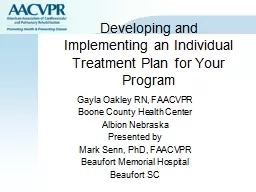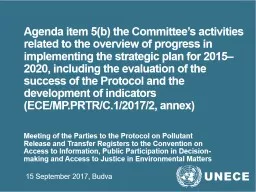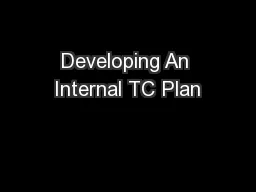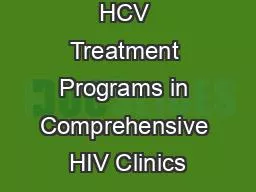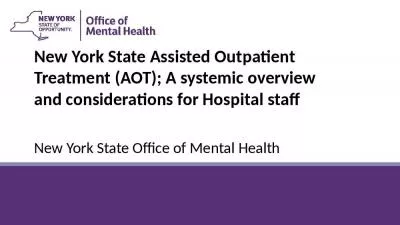PPT-Developing and Implementing an Individual Treatment Plan for Your Program
Author : test | Published Date : 2018-09-20
Gayla Oakley RN FAACVPR Boone County Health Center Albion Nebraska Presented by Mark Senn PhD FAACVPR Beaufort Memorial Hospital Beaufort SC What is an Individualize
Presentation Embed Code
Download Presentation
Download Presentation The PPT/PDF document "Developing and Implementing an Individ..." is the property of its rightful owner. Permission is granted to download and print the materials on this website for personal, non-commercial use only, and to display it on your personal computer provided you do not modify the materials and that you retain all copyright notices contained in the materials. By downloading content from our website, you accept the terms of this agreement.
Developing and Implementing an Individual Treatment Plan for Your Program: Transcript
Gayla Oakley RN FAACVPR Boone County Health Center Albion Nebraska Presented by Mark Senn PhD FAACVPR Beaufort Memorial Hospital Beaufort SC What is an Individualize Treatment Plan A road map of the best ways to provide care for our patients and takes them from the admission assessment through the dischargefollowup. A Computer Lab for Calculus Based Physics. Dr. Richard Taylor. Department of Physics & Engineering. Muskingum University. www.muskingum.edu/~richardt. Overview. Developing an Algorithm. Kinematics. Meeting of the Parties to the Protocol on Pollutant Release and Transfer Registers to the Convention on Access to Information, Public Participation in Decision-making and Access to Justice in Environmental Matters. PREVENTING RUNOVERS AND BACKOVERS IN ROADWAY CONSTRUCTION. . Developing An. . . for Roadway Construction. Internal Traffic . Control Plan. Developing an internal traffic control plan for roadway construction. Lecture 2: Overview. Discussion of Joe’s Garage. Lean Terminology in Joe’s Garage. Types of Waste; Eliminating Waste. Introduction to 5S . Principles for Implementing Lean Manufacturing. Lean = Eliminating Waste. Lecture 1: Overview. Course . goals and syllabus. Logbook . expectations & logbook . review form. Mass Production . vs . Lean Enterprise Systems. Lean Manufacturing . overview. Plant . layout models.. Todd S. Wills, MD. Martha Friedrich, PhD. SPNS Hepatitis C Treatment Expansion Initiative. University of South Florida. The HIV/HCV Disease Burden. Hepatitis C. In U.S., 4 million HCV+ . →. 85% chronic . Melina Charis – . Kortschak. Center for Learning and Creativity. Learning Outcomes . Students will be able to define self-care and understand why it’s important in maintaining personal health. Students will be able to list the 5 aspects of self-care and develop a self-care plan that addresses each of these aspects. Training Objectives. Increase awareness that group treatment is critical to providing high quality clinical care;. Enhanced knowledge and skills utilizing best practices to create a group;. Gain strategies for marketing your group;. Get complete detail on Implementing the NIST Cybersecurity Framework Using COBIT 2019 exam guide to crack ISACA Implementing the NIST Cybersecurity Framework Using COBIT 2019. You can collect all information on Implementing the NIST Cybersecurity Framework Using COBIT 2019 tutorial, practice test, books, study material, exam questions, and syllabus. Firm your knowledge on ISACA Implementing the NIST Cybersecurity Framework Using COBIT 2019 and get ready to crack Implementing the NIST Cybersecurity Framework Using COBIT 2019 certification. Explore all information on Implementing the NIST Cybersecurity Framework Using COBIT 2019 exam with number of questions, passing percentage and time duration to complete test New York State Office of Mental Health. “101” of AOT (Background, purpose, eligibility criteria, oversight, roles, and AOT practical applications). Scope. A training for State and Local Hospital staff in New York State. Dr. Sonalika’s Eye Clinic provide the best Glaucoma treatment in Pune, Hadapsar, Amanora, Magarpatta, Mundhwa, Kharadi Rd, Viman Nagar, Wagholi, and Wadgaon Sheri Dr. Sonalika’s Eye Clinic provide the best Paediatric ophthalmology treatment, Paediatric eye checkup treatment in Pune, Hadapsar, Amanora, Magarpatta, Mundhwa, Kharadi Rd, Viman Nagar, Wagholi, and Wadgaon Sheri Dr. Sonalika’s Eye Clinic provide the best Cataract Phaco Surgery, Cataract surgery treatment in Pune, Hadapsar, Amanora, Magarpatta, Mundhwa, Kharadi Rd, Viman Nagar, Wagholi, and Wadgaon Sheri Dr. Sonalika’s Eye Clinic provide the best Phaco surgery treatment in Pune, Hadapsar, Amanora, Magarpatta, Mundhwa, Kharadi Rd, Viman Nagar, Wagholi, and Wadgaon Sheri
Download Document
Here is the link to download the presentation.
"Developing and Implementing an Individual Treatment Plan for Your Program"The content belongs to its owner. You may download and print it for personal use, without modification, and keep all copyright notices. By downloading, you agree to these terms.
Related Documents

